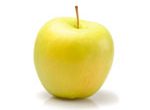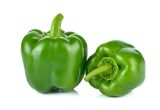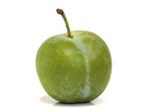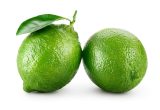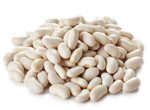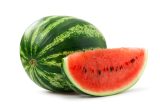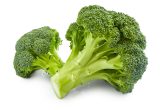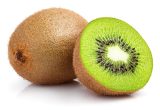Yellow French Bean


Description
- The yellow French bean is a variety of green bean. It belongs to the Fabaceae family, genus Phaseolus, species vulgaris.
- It is native to South America (Pitrat, 2004).
PHYSICAL AND ORGANOLEPTIC CHARACTERISTICS
- The yellow French bean is a mangetout vegetable because it is eaten in its entirety: both pod and seed. Yellow French beans have no string or stalk. They therefore remain tender at an advanced stage of growth (Chambre d’agriculture Bouches-du-Rhône, 2012).
COMPOSITION CHARACTERISTICS (excluding macronutrients, vitamins and minerals)
- Beans are a vegetable with a significant amount of antioxidant phenolic compounds (Guo, 2009; Petropoulos, 2019). Polyphenols are known to prevent oxidative pathologies, cancers and neurodegenerative diseases (Parente, 2013).
RAW
The following values are approximate and depend on variety, season, ripeness, cultivation conditions, etc.
In the Ciqual table, the energy values are calculated from the contents of fat, protein, carbohydrates, dietary fibre, polyols, organic acids and ethanol, each with a specific energy value.
Since raw yellow French beans are a food in which the presence of polyols and/or organic acids is suspected, and Ciqual does not have compositional data to quantify them, no energy value has been calculated (from the Ciqual 2020 table).
COMPOSITION TABLES
For each nutrient, the tables provide information on the content, minimum and maximum values, as well as the percentage of the Dietary Reference Values (DRVs) per 100 g net of raw yellow French beans.
MACRONUTRIENTS
| Constituent (g) | Average content |
Min-Max per 100g |
DRV% |
|---|---|---|---|
| Water | 90,1 | 90 - 90,30 | - |
| Fibers | 2,45 | 1,50 - 3,40 | - |
| Carbohydrates | 5,60 | - | 2,15 |
| Sugars | - | - | - |
| Lipids | 0,16 | 0,12 - 0,20 | 0,23 |
| Saturated fat | 0,026 | - | 0,13 |
| Protein | 1,85 | 1,82 - 1,88 | 3,70 |
| Constituent (g) | Amount | Min-Max | DRV% |
|---|---|---|---|
| Water | Ciqual 2020 | - | - |
| Fibers | Ciqual 2020 | - | - |
| Carbohydrates | Ciqual 2020 | - | Règlement (UE) N°1169/2011 du parlement Européen et du conseil du 25 octobre 2011 |
| Sugars | Ciqual 2020 | - | Règlement (UE) N°1169/2011 du parlement Européen et du conseil du 25 octobre 2011 |
| Lipids | Ciqual 2020 | - | Règlement (UE) N°1169/2011 du parlement Européen et du conseil du 25 octobre 2011 |
| Saturated fat | Ciqual 2020 | - | Règlement (UE) N°1169/2011 du parlement Européen et du conseil du 25 octobre 2011 |
| Protein | Ciqual 2020 | - | Règlement (UE) N°1169/2011 du parlement Européen et du conseil du 25 octobre 2011 |
Zoom on carbohydrates
- The carbohydrate content of raw yellow French beans (5.60 g per 100 g) is higher than the average amount in raw vegetables (4.45 g per 100 g).
Zoom on fibres
- The fibre content of raw yellow French beans (2.45 g per 100 g) is equivalent to the average amount found in raw vegetables (2.43 g per 100 g).
Zoom on proteins
- The protein content of raw yellow French beans (1.85 g per 100 g) is equivalent to the average amount found in raw vegetables (1.87 g per 100 g).
Zoom on lipids
- Yellow French beans are fat-free* as they contain less than 0.5 g of fat per 100 g.
MINERALS AND TRACE ELEMENTS
| Constituent | Average content |
Min-Max per 100g |
DRV% |
|---|---|---|---|
| Calcium (mg) | 41 | 30 - 54 | 5,13 |
| Chloride (mg) | - | - | - |
| Copper (mg) | 0,07 | 0,069 - NC | 7 |
| Iron (mg) | 1,07 | 0,54 - 2,44 | 7,64 |
| Iodine (µg) | 0,60 | 0,40 - 1 | 0,40 |
| Magnesium (mg) | 26 | 25 - 27 | 6,93 |
| Manganese (mg) | 0,21 | - | 10,50 |
| Phosphorus (mg) | 38 | - | 5,43 |
| Potassium (mg) | 209 | - | 10,45 |
| Selenium (µg) | - | - | - |
| Sodium (mg) | 6 | - | - |
| Zinc (mg) | 0,32 | 0,24 - 0,40 | 3,20 |
| Constituent | Amount | Min-Max | DRV% |
|---|---|---|---|
| Calcium (mg) | Ciqual 2020 | - | Règlement (UE) N°1169/2011 du parlement Européen et du conseil du 25 octobre 2011 |
| Chloride (mg) | Ciqual 2020 | - | Règlement (UE) N°1169/2011 du parlement Européen et du conseil du 25 octobre 2011 |
| Copper (mg) | Ciqual 2020 | - | Règlement (UE) N°1169/2011 du parlement Européen et du conseil du 25 octobre 2011 |
| Iron (mg) | Ciqual 2020 | - | Règlement (UE) N°1169/2011 du parlement Européen et du conseil du 25 octobre 2011 |
| Iodine (µg) | Ciqual 2020 | - | Règlement (UE) N°1169/2011 du parlement Européen et du conseil du 25 octobre 2011 |
| Magnesium (mg) | Ciqual 2020 | - | Règlement (UE) N°1169/2011 du parlement Européen et du conseil du 25 octobre 2011 |
| Manganese (mg) | Ciqual 2020 | - | Règlement (UE) N°1169/2011 du parlement Européen et du conseil du 25 octobre 2011 |
| Phosphorus (mg) | Ciqual 2020 | - | Règlement (UE) N°1169/2011 du parlement Européen et du conseil du 25 octobre 2011 |
| Potassium (mg) | Ciqual 2020 | - | Règlement (UE) N°1169/2011 du parlement Européen et du conseil du 25 octobre 2011 |
| Selenium (µg) | Ciqual 2020 | - | Règlement (UE) N°1169/2011 du parlement Européen et du conseil du 25 octobre 2011 |
| Sodium (mg) | Ciqual 2020 | - | - |
| Zinc (mg) | Ciqual 2020 | - | Règlement (UE) N°1169/2011 du parlement Européen et du conseil du 25 octobre 2011 |
Zoom on minerals and trace elements
- Raw yellow French beans contain significant amounts of manganese and potassium. In fact, they provide the equivalent of:
- 10.50% of DRVs for manganese, i.e. 0.21 mg per 100 g;
- 10.45% of DRVs for potassium, i.e. 209 mg per 100 g.
- The other minerals and trace elements are present in quantities representing less than 8% of DRVs.
VITAMINS
| Constituent | Average content |
Min-Max per 100g |
DRV% |
|---|---|---|---|
| Provitamin A Beta-carotene (µg) | - | - | - |
| Vitamin A equivalent (µg) | - | - | - |
| Vitamin B1 (mg) | 0,08 | 0,053 - 0,091 | 7,27 |
| Vitamin B2 (mg) | 0,12 | 0,11 - 0,14 | 8,57 |
| Vitamin B3 (mg) | 0,68 | 0,44 - 0,75 | 4,25 |
| Vitamin B5 (mg) | 0,072 | 0,05 - 0,094 | 1,20 |
| Vitamin B6 (mg) | 0,087 | 0,064 - 0,18 | 6,21 |
| Vitamin B9 (µg) | 68,50 | 37 - 100 | 34,25 |
| Vitamin C (mg) | 18,70 | 15 - 31 | 23,38 |
| Vitamin E (mg) | 0,45 | - | 3,75 |
| Vitamin K1 (µg) | - | - | - |
| Constituent | Amount | Min-Max | DRV% |
|---|---|---|---|
| Provitamin A Beta-carotene (µg) | Ciqual 2020 | - | - |
| Vitamin A equivalent (µg) | Calcul à partir de la valeur Provitamine A Béta-carotène* | - | Règlement (UE) N°1169/2011 du parlement Européen et du conseil du 25 octobre 2011 |
| Vitamin B1 (mg) | Ciqual 2020 | - | Règlement (UE) N°1169/2011 du parlement Européen et du conseil du 25 octobre 2011 |
| Vitamin B2 (mg) | Ciqual 2020 | - | Règlement (UE) N°1169/2011 du parlement Européen et du conseil du 25 octobre 2011 |
| Vitamin B3 (mg) | Ciqual 2020 | - | Règlement (UE) N°1169/2011 du parlement Européen et du conseil du 25 octobre 2011 |
| Vitamin B5 (mg) | Ciqual 2020 | - | Règlement (UE) N°1169/2011 du parlement Européen et du conseil du 25 octobre 2011 |
| Vitamin B6 (mg) | Ciqual 2020 | - | Règlement (UE) N°1169/2011 du parlement Européen et du conseil du 25 octobre 2011 |
| Vitamin B9 (µg) | Ciqual 2020 | - | Règlement (UE) N°1169/2011 du parlement Européen et du conseil du 25 octobre 2011 |
| Vitamin C (mg) | Ciqual 2020 | - | Règlement (UE) N°1169/2011 du parlement Européen et du conseil du 25 octobre 2011 |
| Vitamin E (mg) | Ciqual 2020 | - | Règlement (UE) N°1169/2011 du parlement Européen et du conseil du 25 octobre 2011 |
| Vitamin K1 (µg) | Ciqual 2020 | - | Règlement (UE) N°1169/2011 du parlement Européen et du conseil du 25 octobre 2011 |
Zoom on vitamins
- Raw yellow French beans are high in vitamin B9, as they provide the equivalent of 34.25% of DRVs, i.e. 68.50 µg per 100 g.
- They are also a source of vitamin C, as they provide the equivalent of 23.38% of DRVs, i.e. 18.70 mg per 100 g.
- The other vitamins represent less than 9% of DRVs.
POLYPHENOLS
BOILED
The following values are approximate and depend on variety, season, ripeness, cultivation conditions, etc.
Boiled yellow French beans are low in energy* as they provide an average of 34.60 calories (kcal) per 100 g, i.e. 145 kJ.
COMPOSITION TABLES
For each nutrient, the tables provide information on the content, minimum and maximum values, as well as the percentage of the Dietary Reference Values (DRVs) per 100 g net of boiled/cooked in water yellow French beans.
*Regulation (EC) No 1924/2006 of the European Parliament and of the Council of 20 December 2006 on nutrition and health claims made on foods.
MACRONUTRIENTS
| Constituent (g) | Average content |
Min-Max per 100g |
DRV% |
|---|---|---|---|
| Water | 89,6 | - | - |
| Fibers | 2,70 | - | - |
| Carbohydrates | 4,45 | - | 1,71 |
| Sugars | 2,20 | - | 2,44 |
| Lipids | 0,30 | - | 0,43 |
| Saturated fat | 0,09 | - | 0,45 |
| Protein | 2,19 | NC - 2,20 | 4,38 |
| Constituent (g) | Amount | Min-Max | DRV% |
|---|---|---|---|
| Water | Ciqual 2020 (valeur issue des analyses Ciqual-Aprifel 2018) | - | - |
| Fibers | Ciqual 2020 (valeur issue des analyses Ciqual-Aprifel 2018) | - | - |
| Carbohydrates | Ciqual 2020 | - | Règlement (UE) N°1169/2011 du parlement Européen et du conseil du 25 octobre 2011 |
| Sugars | Ciqual 2020 (valeur issue des analyses Ciqual-Aprifel 2018) | - | Règlement (UE) N°1169/2011 du parlement Européen et du conseil du 25 octobre 2011 |
| Lipids | Ciqual 2020 (valeur issue des analyses Ciqual-Aprifel 2018) | - | Règlement (UE) N°1169/2011 du parlement Européen et du conseil du 25 octobre 2011 |
| Saturated fat | Ciqual 2020 (valeur issue des analyses Ciqual-Aprifel 2018) | - | Règlement (UE) N°1169/2011 du parlement Européen et du conseil du 25 octobre 2011 |
| Protein | Ciqual 2020 (valeur issue des analyses Ciqual-Aprifel 2018) | - | Règlement (UE) N°1169/2011 du parlement Européen et du conseil du 25 octobre 2011 |
Zoom on carbohydrates
- The carbohydrate content of yellow French beans cooked in water (4.45 g per 100 g) is slightly lower than the average amount for cooked vegetables (4.85 g per 100 g). This means that cooked yellow French beans are low in sugar* as they contain less than 5 g of sugar per 100 g.
- They consist mainly of sugar in the form of fructose (1.20 g per 100 g), glucose (0.70 g per 100 g) and sucrose (0.30 g per 100 g), and starch (0.40 g per 100 g).
Zoom on fibres
- The amount of fibre in yellow French beans cooked in water (2.70 g per 100 g) is slightly lower than the average amount in cooked vegetables (2.89 g per 100 g).
Zoom on proteins
- The protein content of yellow French beans cooked in water (2.19 g per 100 g) is higher than the average amount found in cooked vegetables (2 g per 100 g).
Zoom on lipids
MINERALS AND TRACE ELEMENTS
| Constituent | Average content |
Min-Max per 100g |
DRV% |
|---|---|---|---|
| Calcium (mg) | 56 | - | 7 |
| Chloride (mg) | 20,10 | - | 2,51 |
| Copper (mg) | 0,13 | - | 13 |
| Iron (mg) | 0,99 | - | 7,07 |
| Iodine (µg) | < 20 | - | - |
| Magnesium (mg) | 26 | - | 6,93 |
| Manganese (mg) | 0,35 | - | 17,50 |
| Phosphorus (mg) | 43 | - | 6,14 |
| Potassium (mg) | 210 | - | 10,50 |
| Selenium (µg) | < 20 | - | - |
| Sodium (mg) | < 5 | - | - |
| Zinc (mg) | 0,34 | - | 3,40 |
| Constituent | Amount | Min-Max | DRV% |
|---|---|---|---|
| Calcium (mg) | Ciqual 2020 (valeur issue des analyses Ciqual-Aprifel 2018) | - | Règlement (UE) N°1169/2011 du parlement Européen et du conseil du 25 octobre 2011 |
| Chloride (mg) | Ciqual 2020 (valeur issue des analyses Ciqual-Aprifel 2018) | - | Règlement (UE) N°1169/2011 du parlement Européen et du conseil du 25 octobre 2011 |
| Copper (mg) | Ciqual 2020 (valeur issue des analyses Ciqual-Aprifel 2018) | - | Règlement (UE) N°1169/2011 du parlement Européen et du conseil du 25 octobre 2011 |
| Iron (mg) | Ciqual 2020 (valeur issue des analyses Ciqual-Aprifel 2018) | - | Règlement (UE) N°1169/2011 du parlement Européen et du conseil du 25 octobre 2011 |
| Iodine (µg) | Ciqual 2020 (valeur issue des analyses Ciqual-Aprifel 2018) | - | Règlement (UE) N°1169/2011 du parlement Européen et du conseil du 25 octobre 2011 |
| Magnesium (mg) | Ciqual 2020 (valeur issue des analyses Ciqual-Aprifel 2018) | - | Règlement (UE) N°1169/2011 du parlement Européen et du conseil du 25 octobre 2011 |
| Manganese (mg) | Ciqual 2020 (valeur issue des analyses Ciqual-Aprifel 2018) | - | Règlement (UE) N°1169/2011 du parlement Européen et du conseil du 25 octobre 2011 |
| Phosphorus (mg) | Ciqual 2020 (valeur issue des analyses Ciqual-Aprifel 2018) | - | Règlement (UE) N°1169/2011 du parlement Européen et du conseil du 25 octobre 2011 |
| Potassium (mg) | Ciqual 2020 (valeur issue des analyses Ciqual-Aprifel 2018) | - | Règlement (UE) N°1169/2011 du parlement Européen et du conseil du 25 octobre 2011 |
| Selenium (µg) | Ciqual 2020 (valeur issue des analyses Ciqual-Aprifel 2018) | - | Règlement (UE) N°1169/2011 du parlement Européen et du conseil du 25 octobre 2011 |
| Sodium (mg) | Ciqual 2020 (valeur issue des analyses Ciqual-Aprifel 2018) | - | - |
| Zinc (mg) | Ciqual 2020 (valeur issue des analyses Ciqual-Aprifel 2018) | - | Règlement (UE) N°1169/2011 du parlement Européen et du conseil du 25 octobre 2011 |
Zoom on minerals and trace elements
- Yellow French beans cooked in water are a source of manganese, as they provide the equivalent of 17.50% of DRVs, i.e. 0.35 mg per 100 g.
- They also contain significant amounts of copper and potassium. In fact, they provide the equivalent of:
- 13% of DRVs for copper, i.e. 0.13 mg per 100 g;
- 10.50% of DRVs for potassium, i.e. 210 mg per 100 g.
- The other minerals and trace elements are present in quantities representing less than 8% of DRVs.
VITAMINS
| Constituent | Average content |
Min-Max per 100g |
DRV% |
|---|---|---|---|
| Provitamin A Beta-carotene (µg) | 74,70 | - | - |
| Vitamin A equivalent (µg) | 12,45 | - | 1,56 |
| Vitamin B1 (mg) | 0,04 | - | 3,64 |
| Vitamin B2 (mg) | 0,053 | - | 3,79 |
| Vitamin B3 (mg) | 0,36 | - | 2,25 |
| Vitamin B5 (mg) | 0,12 | - | 2 |
| Vitamin B6 (mg) | < 0,01 | - | - |
| Vitamin B9 (µg) | 39,70 | - | 19,85 |
| Vitamin C (mg) | 7,57 | - | 9,46 |
| Vitamin E (mg) | 0,31 | - | 2,58 |
| Vitamin K1 (µg) | 3,88 | - | 5,17 |
| Constituent | Amount | Min-Max | DRV% |
|---|---|---|---|
| Provitamin A Beta-carotene (µg) | Ciqual 2020 (valeur issue des analyses Ciqual-Aprifel 2018) | - | - |
| Vitamin A equivalent (µg) | Calcul à partir de la valeur Provitamine A Béta-carotène* | - | Règlement (UE) N°1169/2011 du parlement Européen et du conseil du 25 octobre 2011 |
| Vitamin B1 (mg) | Ciqual 2020 (valeur issue des analyses Ciqual-Aprifel 2018) | - | Règlement (UE) N°1169/2011 du parlement Européen et du conseil du 25 octobre 2011 |
| Vitamin B2 (mg) | Ciqual 2020 (valeur issue des analyses Ciqual-Aprifel 2018) | - | Règlement (UE) N°1169/2011 du parlement Européen et du conseil du 25 octobre 2011 |
| Vitamin B3 (mg) | Ciqual 2020 (valeur issue des analyses Ciqual-Aprifel 2018) | - | Règlement (UE) N°1169/2011 du parlement Européen et du conseil du 25 octobre 2011 |
| Vitamin B5 (mg) | Ciqual 2020 (valeur issue des analyses Ciqual-Aprifel 2018) | - | Règlement (UE) N°1169/2011 du parlement Européen et du conseil du 25 octobre 2011 |
| Vitamin B6 (mg) | Ciqual 2020 (valeur issue des analyses Ciqual-Aprifel 2018) | - | Règlement (UE) N°1169/2011 du parlement Européen et du conseil du 25 octobre 2011 |
| Vitamin B9 (µg) | Ciqual 2020 (valeur issue des analyses Ciqual-Aprifel 2018) | - | Règlement (UE) N°1169/2011 du parlement Européen et du conseil du 25 octobre 2011 |
| Vitamin C (mg) | Ciqual 2020 (valeur issue des analyses Ciqual-Aprifel 2018) | - | Règlement (UE) N°1169/2011 du parlement Européen et du conseil du 25 octobre 2011 |
| Vitamin E (mg) | Ciqual 2020 | - | Règlement (UE) N°1169/2011 du parlement Européen et du conseil du 25 octobre 2011 |
| Vitamin K1 (µg) | Ciqual 2020 (valeur issue des analyses Ciqual-Aprifel 2018) | - | Règlement (UE) N°1169/2011 du parlement Européen et du conseil du 25 octobre 2011 |
Zoom on vitamins
- Yellow French beans cooked in water are a source of vitamin B9 as they provide the equivalent of 19.85% of DRVs, i.e. 39.70 µg per 100 g.
- The second best represented vitamin is vitamin C, as this vegetable provides the equivalent of 9.46% of DRVs, i.e. 7.57 mg per 100 g.
- The content of the other vitamins represents less than 6% of DRVs.
*Calculation made: Beta-Carotene / 6 + retinol
POLYPHENOLS
Nutrition and health claims
According to the definitions of nutrition claims as set out in Regulation (EC) No 1924/2006 on nutrition and health claims, and in view of the composition of raw yellow French beans, the following claims may be used:
NUTRITION CLAIMS OF RAW YELLOW FRENCH BEANS
- Fat-free (100 g of raw yellow French beans contain less than 0.5 g of fat)
- High in vitamin B9 (100 g of raw yellow French beans provide the equivalent of more than 30% of DRVs)
- Source of vitamin C (100 g of raw yellow French beans provide the equivalent of more than 15% of DRVs)
HEALTH CLAIMS (for a consumption of 100 g of raw yellow French beans)
Folates or vitamin B9
- Folates contribute to:
- maternal tissue growth during pregnancy,
- normal amino acid synthesis,
- normal blood formation,
- normal homocysteine metabolism,
- normal psychological function,
- normal function of the immune system,
- reduction of tiredness and fatigue.
- Folates have a role in the process of cell division.
Vitamin C
- Vitamin C contributes to:
- normal function of the immune system during and after intense physical exercise,
- normal collagen formation for the normal function of blood vessels,
- normal collagen formation for the normal function of bones,
- normal collagen formation for the normal function of cartilage,
- normal collagen formation for the normal function of gums,
- normal collagen formation for the normal function of skin,
- normal collagen formation for the normal function of teeth,
- normal energy-yielding metabolism,
- normal functioning of the nervous system,
- normal psychological function,
- normal function of the immune system,
- protection of cells from oxidative stress,
- reduction of tiredness and fatigue,
- regeneration of the reduced form of vitamin E.
- Vitamin C increases iron absorption.
Nutrition and health claims
According to the definitions of nutrition claims as set out in Regulation (EC) No 1924/2006 on nutrition and health claims, and in view of the composition of boiled/cooked in water yellow French beans, the following claims may be used:
NUTRITION BENEFITS OF YELLOW FRENCH BEANS COOKED IN WATER
- Low in energy (100 g of yellow French beans cooked in water provide less than 40 kcal)
- Fat-free (100 g of yellow French beans cooked in water contain less than 0.5 g of fat)
- Low in sugar (100 g of yellow French beans cooked in water contain less than 5 g of sugar)
- Source of vitamin B9 (100 g of yellow French beans cooked in water provide the equivalent of more than 15% of DRVs)
- Source of manganese (100 g of yellow French beans cooked in water provide the equivalent of more than 15% of DRVs)
HEALTH CLAIMS (for a consumption of 100 g of yellow French beans cooked in water)
Folates or vitamin B9
- Folates contribute to:
- maternal tissue growth during pregnancy,
- normal amino acid synthesis,
- normal blood formation,
- normal homocysteine metabolism,
- normal psychological function,
- normal function of the immune system,
- reduction of tiredness and fatigue.
Manganese
- Manganese contributes to:
- normal energy-yielding metabolism,
- maintenance of normal bones,
- normal formation of connective tissues,
- protection of cells from oxidative stress.
References
- Agence nationale de sécurité sanitaire de l’alimentation, de l’environnement et du travail. Table de composition nutritionnelle des aliments Ciqual 2020. Consultée le 25/08/2020 depuis le site internet Ciqual https://ciqual.anses.fr/
- Chambre d’agriculture du Vaucluse, Chambre d’agriculture des Bouches-du-Rhône. Tout savoir sur la culture du Haricot sous abris et en plein champ. 2012. 16p
- Guo L, Ma Y, Shi J, Xue S. The purification and characterisation of polyphenol oxidase from green bean (Phaseolus vulgaris L.). Food Chemistry. 2009; 17(1):143-51
- Parente CP, Reis Lima MJ, Teixeira-Lemos E, Moreira MM, Aquiles A. Barros, and Luís F. Guido. 2013. Phenolic content and antioxidant activity determination in broccoli and lamb’s lettuce. International Science Index, Nutrition and Food Engineering. 2013; 7(7):562-65
- Petropoulos SA, Taofiq O, Fernandes Â, Tzortzakis N, Ciric A, Sokovic M, Barros L, Ferreira IC. Bioactive properties of greenhouse-cultivated green beans (Phaseolus vulgaris L.) under biostimulants and water-stress effect. J Sci Food Agric. 2019; 99(13):6049-59.
- Pitrat M et Foury C, coord. Histoires de légumes – Des origines à l’orée du XXIe siècle. INRA éditions, 2004, p.376.
- Règlement (CE) N° 1924/2006 du Parlement européen et du Conseil du 20 décembre 2006 concernant les allégations nutritionnelles et de santé portant sur les denrées alimentaires.
- Règlement (UE) N°432/2012 de la Commission du 16 mai 2012 établissant une liste des allégations de santé autorisées portant sur les denrées alimentaires, autres que celles faisant référence à la réduction du risque de maladie ainsi qu’au développement et à la santé infantiles.
- Règlement (UE) n°1169/2011 du Parlement européen et du Conseil du 25 octobre 2011 concernant l’information des consommateurs sur les denrées alimentaires, modifiant les règlements (CE) n°1924/2006 et (CE) n°1925/2006 du Parlement européen et de Conseil et abrogeant la directive 87/250/CEE de la Commission, la directive 90/496/CEE du Conseil, la directive 1999/10/CE de la Commission, la directive 200/13/CE du Parlement européen et du Conseil, les directives 2002/67/CE et 2008/5/CE de la Commission et le règlement (CE) n°608/2004 de la Commission.




